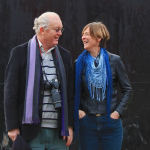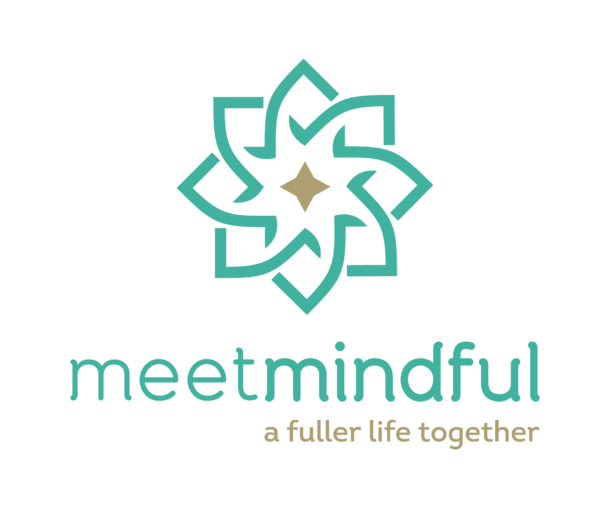Somehow, emotions got a bad rap for being untrustworthy and we’re here to clear the air. Ever wonder “how can I trust my emotions?” This one’s for you.
I am a bodyworker and I see emotions arise in people in unconscious and conscious ways when I work with their bodies. I am also a women’s coach, and when we talk about life in real and meaningful ways, emotions arise there too.
Understanding emotions, and cultivating emotional mindfulness, is a hot topic in the mindful community. Many of us share the sentiment in the title of this article, that there is an untrustworthy quality to our emotional experiences.
Emotions are simply neural processes that represent the overall cognitive and somatic state of the organism.
When they arise in the present moment with no stimuli that is directly related, I see them as opportunities to heal old hurts.
I find the distrust of emotions interesting. It’s as if we also could question the trustworthiness of our stomach to digest food. Our brains have some very complex systems in place and they control some of the most baffling processes that science has yet to explain.
From their paper “Emotional Consciousness: A neural model of how cognitive appraisal and somatic perception interact to produce qualitative experience”* Thagard and Aubie explain:
Many brain areas contribute to human emotions, and an account of what they do and how they interact is crucial for a theory of emotional consciousness. Our starting point is a recent theory of emotional decision making proposed by Litt, Eliasmith, and Thagard (2006). According to this theory, human decision making has an emotional component that involves the interaction of at least seven major brain areas that contribute to evaluation of potential actions: the amygdala, orbitofrontal cortex, anterior cingulate cortex, dorsolateral pre- frontal cortex, the ventral striatum, midbrain dopaminergic neurons, and serotonergic neurons centered in the dorsal raphe nucleus of the brainstem.
Unlike moods, which can last for hours or days, emotions are relatively short in duration. Part of the explanation of the beginning of an emotional experience is obviously new external stimuli such as the television image of a team winning and the email from a co-author about a paper acceptance. But many external stimuli do not produce new emotions, so what gets an emotional experience going?
Emotions are not constant: you can be feeling frustrated that your writing is going slowly, then shift to happiness when you hear on the radio that your favorite sports team has won. Emotional changes include shifts from one emotion to another as the result of shifts in attention to different objects or situations, but can also stem from a reinterpretation of a single object or situation, as when a person goes from feeling positive about a delicious food to feeling negative when its caloric consequences are appreciated. Emotional changes can also be more diffuse, as when a generally positive mood shifts to a more negative one as a frustrating day unfolds. Emotional changes can occur over long stretches of time, for example when people gradually change their attitude toward an object or state of affairs, or when therapy and medication help a depressed person to assume a more positive view of life.
To me, there is a differentiation in the way people are aware of, and interpret, their emotional states that makes a very big distinction in their capacity for mindfulness.
Imagine you receive an email response to something you wrote with a lot of emotional investment; an email asking friends for help marketing your new business, for example.
When you wrote the original email, you were passionate about your new endeavor, and perhaps created expectations that others would be able to feel your emotions through your writing. Then, more expectations may have been laid upon those, with anticipation of positive feedback.
So this response is not necessarily negative, but it is expressing criticisms, and maybe they are also passionate in nature.
The emotional soup contained in this example is confusing and difficult to navigate, even for the most emotionally intelligent of us all. However, I have found there is a simple and integrated way to diffuse such ticking time bombs as these in daily life, and return to the situation as your authentic self (not some version of yourself running on old programs and reactionary behaviors.)
When we have an underlying distrust of our emotions, of the way our bodies react to them, and the way our mind begins to rapid-fire into old programming, we build a wall to reality. The way over the wall—or through it—is with mindfulness, acceptance of what IS, and understanding the nature of you, your SELF.
You are NOT your thoughts. You are NOT your beliefs, or your body, or the acid in your stomach. You are aware of all of these experiences, as they happen in the moment they are happening.
You have choices—what you decide to do with these sensations, with the thoughts, and with the beliefs is totally available to your discretion. You can choose to pause, to notice you are having a strong emotion. You can ask yourself what this reaction is reacting to. You can get clear about what in your past has felt similar. You can be proactive with healing this old hurt, and express yourself honestly and with authentic vulnerability, what is happening for you in this moment.
With this email example, what choices would you have? You could respond while “in the box” of your emotional reactivity and treat the commentary as an attack, thus making a negative situation with the person that didn’t exist until you chose that outcome. Or you could take time to yourself, journal or express yourself in some way to diffuse the bomb of emotions, and come back to the content later with clear eyes. I guarantee you will see a gem of wisdom there.
To me, this is the real work of showing up and being mindful in everyday life. Trust your emotions as windows into your most vulnerable hurts. What would happen if this opening to vulnerability were modeled for you more often? What if you could witness someone making this shift, and understand better how to do it? Why not explore this yourself and give that gift to someone else?
Emotional mindfulness is what defines the humans from the robots—embrace your emotions and don’t be a bot!
*by Paul Thagard & Brandon Aubie Department of Philosophy, University of Waterloo, 200 University Avenue West, Waterloo, Ont., Canada N2L 3G1 | 8 January 2007 I http://cogsci.uwaterloo.ca/Articles/emocon.Thagard.2008.pdf











